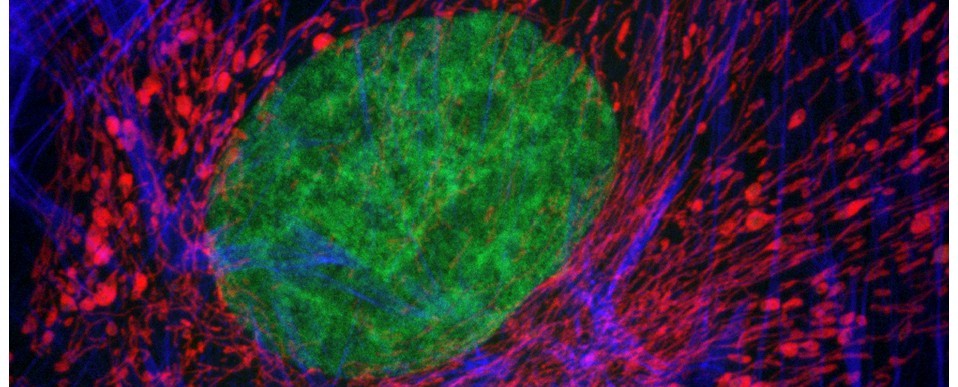Dr Simon Pope and his research group in CHEMY have been collaborating with the BIOSI Bioimaging Unit for over 8 years. Their research is focussed upon the development of new, metal-based, fluorescent probes for cell imaging applications, and forms part of a larger study on the use of metal complexes, which include rhenium and gold, as multi-modal imaging agents with therapeutic potential. In these studies, we have performed confocal imaging to (1) assess the cytotoxicity of the new probes, (2) evaluate their cellular uptake and determine their cytoplasmic localisation, and (3) characterise their fluorescent emissions via spectral (wavelength or lambda) scanning. The collaboration has yielded a number of high impact publications (see below) as well as a journal cover! With the improved potential of the new super-resolution confocal system we anticipate a lot more to come.
AJH
Find out more:
- Langdon-Jones et al. (2014) Fluorescent Rhenium-Naphthalimide conjugates as cellular imaging agents. Inorganic Chemistry 53: 3788-3797.
- Lloyd, D., Coogan, M. P. and Pope, S. J. 2012. Novel metal-based luminophores for biological imaging. In: Geddes, C. D. ed. Reviews in Fluorescence 2010. Reviews in Fluorescence, Vol. 7. New York: Springer, pp. 15-44.
- Thorp-Greenwood et al. (2011) A ‘Sleeping Trojan Horse’ which transports metal ions into cells, localises in nucleoli, and has potential for bimodal fluorescence/PET imaging. Chem Commun 47: 3096-3098.
- Fernandez-Moreira et al. (2010) Uptake and localisation of rhenium fac-tricarbonyl polypyridyls in fluorescent cell imaging experiments. Org Biomol Chem 8:3888-901.
- Coogan et al. (2010) Probing intracellular oxygen by quenched phosphorescence lifetimes of nanoparticles containing polyacrylamide-embedded [Ru(dpp(SO3Na)2)3]Cl2. Photochem Photobiol Sci 9: 103-109.
- Amoroso et al. (2008) 3-Chloromethylpyridyl bipyridine fac-tricarbonyl rhenium: a thiol-reactive luminophore for fluorescence microscopy accumulates in mitochondria. New J Chem 32: 1097-1102.
- Amoroso et al (2007) Rhenium fac tricarbonyl bisimine complexes: biologically useful fluorochromes for cell imaging applications. Chem Commun (Camb) 2007: 3066-3068.
